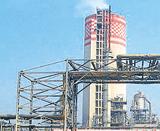
New Delhi, April 24: The leading fertiliser producing cooperative in the country, Kribhco, is under a cloud following a controversial joint venture takeover of an ailing fertiliser plant at Shahjanpur in Uttar Pradesh at an inflated cost.
Kribhco, a multi state co-operative society under the administrative control of the Union Ministry of Chemical and Fertilisers, purchased the ailing Oswal Chemicals and Fertilizers Limited (OCFL) in 2005 in a joint venture with Shyam Basic Infrastructure Project at a cost of Rs 1,900 crore.
The purchase of the plant in joint venture, in which Kribhco currently has 85 per cent stake, has been taken to the Delhi High Court where several questions have been raised amid a gamut of transactions.
Several RTI replies, submitted to the court, imply that the valuation of assets of company was not only conducted in a hasty manner but also the consultant which did valuation did not have experience in valuing the fertiliser companies.
As per the documents obtained through RTI, the valuation of assets of Oswal Fertiliser Plant was conducted by Edelweiss Capital Limited which was engaged by Shyam Group of companies, promoter of Shyam Telecom, on November 3, 2005.
Within two days, on November 5, 2011, the valuation was completed, the deal was sealed and Kribhco agreed to pay Rs 1,900 crore.
In the RTI reply, Kribhco admitted that Edelweiss Capital had no previous experience of valuing a fertiliser plant. Shyam Group is active in telecom and related areas, and had no experience in fertiliser industry.
Moreover, Kribhco had stated that Edelweiss for its report relied on the information provided to them by OCFL.
Suspecting a scam, BJP MP and also former Union Minister Syed Shahnawaz Hussain wrote a letter to Prime Minister Manmohan Singh and brought the matter to his notice.





Comments
Add new comment